|
Doctor Who: The Lost Stories (C·D)
|
| The Castle Of Doom |
|
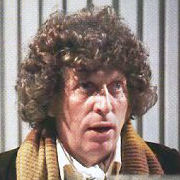 |
|
| Writer: David Fisher |
|
Notes: Fisher submitted this
storyline to producer John Nathan-Turner on November 7th, 1979.
Nathan-Turner rejected it in favour of developing The Leisure Hive.
|
| Characters: The Fourth
Doctor, Romana, K·9 |
| Episodes: Unknown |
| Planned For: Season
Eighteen |
| Stage Reached:
Storyline |
| Synopsis: Unknown
|
|
| References: Doctor
Who Magazine Special Edition #9 |
| Cat's Cradle |
|
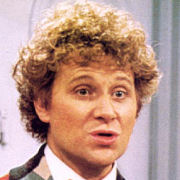 |
|
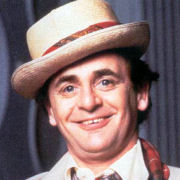 |
|
| Writer: Marc Platt |
|
Notes: In 1984, this unsolicited
idea was submitted to script editor Eric Saward, who rejected it as
being too complex. When Andrew Cartmel became Doctor Who's script
editor in early 1987, Platt offered him a reworked version of
“Cat's Cradle”. Cartmel felt that the concept could not be
achieved on the programme's budget, but encouraged Platt to continue
pitching story ideas; the result was 1989's Ghost Light. Platt later
redeveloped the storyline as the basis for his Doctor Who: The New
Adventures novel Cat's Cradle: Time's Crucible, released in
February 1992 by Virgin Publishing.
|
| Characters: The Sixth
Doctor (original submission; the revised version featured the Seventh
Doctor) |
| Episodes: Unknown |
| Planned For: Seasons
Twenty-Two and Twenty-Five |
| Stage Reached:
Storyline |
| Synopsis: The TARDIS is turned
inside-out, forcing the Doctor to navigate through an alien landscape in
order to restore his time machine.
|
|
| References: Doctor
Who Magazine #190 |
| The Celestial Toymaker |
|
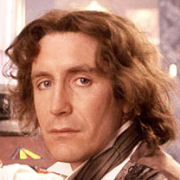 |
|
| Writer: John Leekley |
|
Notes: This was one of several
storylines which appeared in Leekley's series bible for Philip David
Segal's version of Doctor Who, released on March 21st, 1994. It
was based on Brian Hayles' 1966 serial The Celestial Toymaker.
|
| Characters: A reimagined
version of the First Doctor |
| Episodes: 1 (45
minutes) |
| Planned For: 1995
series |
| Stage Reached:
Story idea |
| Synopsis: In the year 2525, the Doctor is
kidnapped by a malevolent entity called the Toymaker. Acting at the
behest of the Master, the Toymaker forces the Doctor to play a mind game
or face eternal imprisonment.
|
|
| References: Doctor
Who: Regeneration |
| Century House |
|
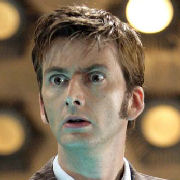 |
|
| Writer: Tom MacRae |
|
Notes: After scripting Rise Of The Cybermen / The Age Of
Steel for Season Twenty-Eight, MacRae was commissioned to write
“Century House”. It wound up not fitting into the schedule
for Season Twenty-Nine, and so it was deferred to the following year.
Because of its almost exclusive focus on the Doctor, it was intended
that “Century House” would be made as part of Season
Thirty's sixth production block, double-banked with Turn Left (Block Seven), which
shone the spotlight firmly on Donna Noble. However, executive producer
Russell T Davies grew unsatisfied with the premise that he had given
MacRae, and he worried about the season having two comedy-oriented
episodes in “Century House” and The Unicorn And The Wasp.
Finally, in mid-October 2007, it was decided to replace “Century
House” with Davies' own script, Midnight.
|
| Characters: The Tenth Doctor,
Martha (original version), Donna (revised version) |
| Episodes: 1
(45-minute) |
| Planned For: Season
Twenty-Nine (original version), eighth episode of Season Thirty (revised
version) |
| Stage Reached: Complete
script |
| Synopsis: While Donna watches with
Sylvia at home, the Doctor joins a live broadcast of paranormal reality
show Most Haunted. Their target is an old house purportedly
haunted by the “Red Widow”. The climax would have involved
the house catching fire. |
|
| References: Doctor
Who Magazine Special Edition #20, Doctor Who: The Writer's
Tale |
| The Cerebroids |
|
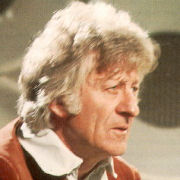 |
|
| Writers: Charlotte and Dennis
Plimmer |
|
Notes: Scripts for “The
Cerebroids” were commissioned on June 24th, 1970. On the 29th,
however, the serial was abruptly abandoned.
|
| Characters: The Third Doctor
(with Jo and UNIT?) |
| Episodes: Unknown |
| Planned For: Season
Eight |
| Stage Reached:
Storyline |
| Synopsis: Unknown
|
|
| References: Doctor
Who Magazine Special Edition #2 |
| Child Prodigy |
|
 |
|
| Writers: Alistair Beaton and Sarah
Dunant |
|
Notes: Beaton -- a colleague of
script editor Douglas Adams from his days as a comedy writer -- and
Dunant were commissioned on December 12th, 1978. On January 9th, 1979,
however, their scripts were rejected as being unacceptable.
|
| Characters: The Fourth
Doctor, Romana |
| Episodes: 4 |
| Planned For: Season
Seventeen |
| Stage Reached:
Complete script |
| Synopsis: Concerned time loops or
freezes.
|
|
| References: Doctor
Who Magazine Special Edition #9 |
| The Children Of January |
|
 |
|
| Writer: Michael Feeney
Callan |
|
Notes: Callan was commissioned on
February 5th, 1985. “The Children Of January” was probably
intended to be the sixth and final story of Season Twenty-Three, to be
made by Bob Gabriel, a director new to Doctor Who. However, on
February 27th, it was announced that production of Doctor Who was
being suspended until Spring 1986, with the programme then returning for
a season of twenty-five-minute episodes. Callan was asked to rework his
storyline for this format. But then, at the end of May, it was decided
that Season Twenty-Three would consist of only fourteen episodes,
leading to the development of The
Trial Of A Time Lord and the abandonment of all of the original
Season Twenty-Three serials.
|
| Characters: The Sixth Doctor,
Peri |
| Episodes: 2
(45-minute) |
| Planned For: Probably the
sixth story of Season Twenty-Three |
| Stage Reached:
Storyline |
| Synopsis: Unknown
|
|
| References: Doctor
Who Magazine Special Edition #3 |
| The Children Of Seth |
|
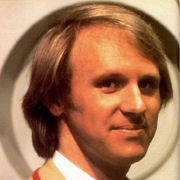 |
|
 |
| aka May Time, Manpower, Man Watch,
Children's Seth |
|
| Writer: Christopher Bailey |
|
Notes: After Bailey completed work
on Snakedance, he was
commissioned to write a storyline called “May Time” on
August 24th, 1982. Full scripts were then requested on September 16th,
by which time the adventure was known as “Manpower” or
“Man Watch”. Bailey became disillusioned with the project,
and had ceased its development by February 1983. On July 17th, however,
he was commissioned to revise the scripts for the Sixth Doctor as
“The Children Of Seth” (originally given the apparently
erroneous title “Children's Seth”). By this time, Doctor
Who was in the process of shifting from 25-minute to 45-minute
episodes. Bailey had trouble devising a structure for his story, and
found himself unable to come up with an appropriate nemesis for the
Doctor. Frustrated by the lack of collaboration he was receiving from
the Doctor Who production office, Bailey decided to withdraw from
the television industry. In December 2011, Big Finish Productions
released an audio adaptation of “The Children Of Seth” by
Marc Platt.
|
| Characters: The Fifth Doctor,
presumably with Tegan and Turlough (original submission); the Sixth
Doctor and Peri (resubmission) |
| Episodes: Unknown |
| Planned For: Seasons
Twenty-One and Twenty-Two |
| Stage Reached:
Script |
| Synopsis: Forthcoming
|
|
| References: Doctor
Who Magazine #s 227, 327, DWM Special Edition #s 1, 3,
Doctor Who: The Complete History #36, Doctor Who: The
Eighties |
| The Circles Of Power |
|
 |
|
| Writer: Brian Hayles |
|
Notes: “The Circles Of
Power” was discovered by Mark Hayles amongst his late father's
files.
|
| Characters: The Third
Doctor, Liz, UNIT |
| Episodes: Unknown |
| Planned For: Season
Seven |
| Stage Reached:
Storyline |
| Synopsis: A new communications satellite,
designed by Sir Walter Llewellyn, is launched to link computers across
Europe and America. However, it has been sabotaged by a radical
scientist named Tilverton, who believes his inventions are being
suppressed by commercial concerns. This precipitates an escalating
number of computer-related incidents across the globe -- including the
release of robotic “sensorspheres” which can induce amnesia
in any person not wearing a special pendant. The pendant actually
denotes membership in the Circles of Power, a secret cabal led by
Llewellyn and which has made a pawn of Tilverton. The Doctor discovers
that Llewellyn plans to use the global chaos to ignite a third World
War, and stops the evacuation of Government officials which would have
triggered this stage of the plan. An orbital missile destroys the
satellite and, when the Doctor inverts the sensorspheres' programming,
the robots wipe the minds of Llewellyn and his co-conspirators.
|
|
| References: Nothing
At The End Of The Lane #3 |
| Circus Of Destiny |
|
 |
|
| Writer: Ben Steed |
|
Notes: Steed delivered his
storyline in January 1983, but it was not taken forward.
|
| Characters: The Fifth
Doctor |
| Episodes: 2 |
| Planned For: Season
Twenty-One |
| Stage Reached:
Storyline |
| Synopsis: Unknown
|
|
| References: Doctor
Who Magazine Special Edition #3 |
| The Claws Of Axos |
|
 |
|
| Writer: John Leekley |
|
Notes: This was one of several
storylines developed for, but dropped from, Leekley's series bible for
Philip David Segal's version of Doctor Who, released on March
21st, 1994. It was based on Bob Baker and Dave Martin's 1971 serial The Claws Of Axos.
|
| Characters: A reimagined
version of the First Doctor |
| Episodes: 1 (45
minutes) |
| Planned For: 1995
series |
| Stage Reached:
Story idea |
| Synopsis: Alien Axons arrive on
modern-day Earth, offering a miraculous substance called Axonite in
exchange for sanctuary. However, the Doctor discovers that the Axons and
Axonite are manifestations of an energy-absorbing parasite called Axos,
created by the Master.
|
|
| References: Doctor
Who: Regeneration |
| The Clock |
|
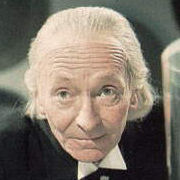 |
|
| Writer: David Ellis |
|
Notes: “The Clock” was
rejected by story editor Gerry Davis on April 4th, 1966.
|
| Characters: The First Doctor
(with Steven and Dodo?) |
| Episodes: Unknown |
| Planned For: Season
Four |
| Stage Reached:
Storyline |
| Synopsis: Unknown
|
|
| References: Doctor
Who: The Handbook: The First Doctor |
| Clone The Drone |
|
 |
| aka Drone The Clone |
|
| Writer: Ian Briggs |
|
Notes: This was the first concept
proposed by Briggs when script editor Andrew Cartmel asked him to
develop ideas for Doctor Who. It was rejected as being too
steeped in cliche, and Briggs instead wrote Dragonfire.
|
| Characters: The Seventh
Doctor, Mel |
| Episodes: Unknown |
| Planned For: Season
Twenty-Four |
| Stage Reached:
Story idea |
| Synopsis: The Doctor and Melanie help a
group of rebels in their struggle against a tyrant.
|
|
| References: Doctor
Who: The Complete History #44 |
| The Count Of Vladimir |
|
 |
|
| Writer: Colin Davis |
|
Notes: Davis' story idea was
rejected on December 21st, 1983 by script editor Eric Saward, who felt
that it aped elements of both Hammer Horror films and 1973's The Time Warrior. It was likely
conceived with the Fifth Doctor in mind but, had it been accepted, would
have been redeveloped for the Sixth Doctor. Davis had submitted at least
one previous idea for Doctor Who.
|
| Characters: Presumably the
Fifth Doctor |
| Episodes: Unknown |
| Planned For: Presumably Season
Twenty-Two |
| Stage Reached:
Story idea |
| Synopsis: Unknown
|
|
| References: Doctor
Who Magazine #575 |
| Crime Of The Century |
|
 |
| aka Action At A Distance |
|
| Writer: Ben Aaronovitch |
|
Notes: The intended third story of
Season Twenty-Seven was meant to be a direct sequel to the second story
-- known as “Thin
Ice” -- which introduced Raine Cunningham as a baby born in
the 1960s. Now she would be seen again as an adult in modern times, and
become the Doctor's new companion. Script editor Andrew Cartmel
envisaged Raine as an aristocratic graduate of fine finishing schools --
providing a sharp contrast with her streetwise predecessor Ace -- yet
very adept at taking care of herself, given her father's career in the
London underworld. In particular, Cartmel thought in terms of the classy
spy Emma Peel, as played by Diana Rigg in The Avengers from 1965
to 1967. Only the first scene -- in which Raine stole away from a dinner
party at a country house and cracked a safe to find the Doctor inside --
had been mapped out when Doctor Who was cancelled in September
1989. Indeed, it was not a certainty that Aaronovitch would ultimately
have written these scripts. The title “Crime Of The Century”
was assigned by Doctor Who Magazine in 1997. Cartmel preferred
“Action At A Distance”, but hewed to the established name
when he created an audio adaptation for Big Finish Productions, released
in May 2011.
|
| Characters: The Seventh
Doctor |
| Episodes: Unknown |
| Planned For: Probably the
third story of Season Twenty-Seven |
| Stage Reached: Story
idea |
| Synopsis: In the present day, the
Doctor's goddaughter Raine Cunningham has grown up to become a burglar
and a safe cracker, even as her father -- once an East End crime boss --
is trying to go straight.
|
|
| References: Doctor
Who Magazine #255, DWM #433, DWM Special Edition
#10 |
| The Cybs |
|
 |
|
| Writer: John Leekley |
|
Notes: This was one of several
storylines developed for, but dropped from, Leekley's series bible for
Philip David Segal's version of Doctor Who, released on March
21st, 1994.
|
| Characters: A reimagined
version of the First Doctor |
| Episodes: 1 (45
minutes) |
| Planned For: 1995
series |
| Stage Reached:
Story idea |
| Synopsis: The Doctor answers a distress
call emanating from an Earth outpost on 21st-century Mars. He finds it
under attack by the Cybs -- cybernetic pirates who plan to kidnap the
humans and transform them into more Cybs.
|
|
| References: Doctor
Who: Regeneration |
| The Daemons |
|
 |
|
| Writer: John Leekley |
|
Notes: This was one of several
storylines developed for, but dropped from, Leekley's series bible for
Philip David Segal's version of Doctor Who, released on March
21st, 1994. It was based on Robert Sloman and Barry Letts' 1971 serial
The Daemons.
|
| Characters: A reimagined
version of the First Doctor |
| Episodes: 1 (45
minutes) |
| Planned For: 1995
series |
| Stage Reached:
Story idea |
| Synopsis: When a prehistoric burial mound
in witch-haunted Salem, Massachusetts is opened by a team of
archaeologists, it unleashes a wave of deadly force. The Doctor
discovers that the Master has harnessed the power of an alien Daemon who
lay buried in the mound for millennia.
|
|
| References: Doctor
Who: Regeneration |
| The Daleks In London |
|
 |
|
| Writer: Robert Sloman |
|
Notes: For Season Nine, producer
Barry Letts decided to bring back the Daleks, who had not starred in a
Doctor Who story since The Evil Of The
Daleks at the end of Season Four. The original vehicle for their
return was to have been “The Daleks In London”, the storyline
for which was commissioned from Sloman on May 25th, 1971, but Letts
subsequently decided that the Daleks would be more effectively used in the
season opener, Louis Marks' “Years Of Doom”. As such, Marks'
story was rewritten as Day Of The
Daleks while Sloman was asked to develop a new storyline under his
original commission. This became The Time
Monster.
|
| Characters: The Third Doctor,
Jo, UNIT |
| Episodes: 6 |
| Planned For: Final story of
Season Nine |
| Stage Reached:
Storyline |
| Synopsis: Unknown
|
|
| References: Doctor
Who Magazine #268, DWM Special Edition #2 |
| The Dark Dimension |
|
 |
| aka Lost In The Dark Dimension |
|
| Writers: Adrian Rigelsford and
Joanna McCaul |
|
Notes: On June 10th, 1993 BBC
Enterprises announced that it was making a direct-to-video special to
celebrate Doctor Who's thirtieth anniversary. The script,
originally called “Lost In The Dark Dimension” and then
simply “The Dark Dimension”, was planned to be written by
Rigelsford and McCaul, before Rigelsford became the sole author. He drew
links with the Doctor Who: The New Adventures line of original
novels from Virgin Publishing: Summerfield was a take on Professor
Bernice Summerfield, the Doctor's companion introduced in the 1992 novel
Love And War, while Ace's full name had been revealed to be
Dorothy McShane in 1993's Set Piece. The producers of “The
Dark Dimension” were to be David Jackson and Penny Mills; BBC
Drama then decided to become involved with the project and former Head
of Series and Serials Peter Cregeen took Jackson's place. “The
Dark Dimension” was now intended to air on BBC1 on November 28th.
Former producer John Nathan-Turner was invited to participate as a
consultant, but declined. Graeme Harper agreed to direct, with filming
scheduled to begin on August 24th. It was hoped that either Brian
Blessed or David Bowie might be cast as Hawkspur. However, the project's
meagre budget meant that not all of the Doctors could play a major role,
and so Rigelsford chose to showcase Tom Baker's Fourth Doctor -- who was
seen as the most popular -- with a secondary role for Sylvester McCoy's
Seventh Doctor. This drew objections from Jon Pertwee, Peter Davison and
Colin Baker, who felt that they were being relegated to cameo
appearances. At the same time, Philip David Segal was negotiating a
co-production agreement with the BBC to bring Doctor Who back to
television on a regular basis. He felt that “The Dark
Dimension” might be unflatteringly conflated with his proposal,
which would eventually bear fruit as Doctor Who (1996). With all of
these circumstances working against it, the BBC chose to cancel the
special on July 9th.
|
| Characters: The Seventh
Doctor, the Sixth Doctor, the Fifth Doctor, the Fourth Doctor, the Third
Doctor, Ace, Brigadier Lethbridge-Stewart |
| Episodes: 1 (96
minutes) |
| Planned For: 1993
Special |
| Stage Reached: Full
script |
| Synopsis: Professor Oliver Hawkspur is
running for Prime Minister, but is in fact trying to push the Earth
towards an ecological crisis. Troopers from the future, led by
Summerfield, arrive and encounter a schoolteacher named Dorothy McShane
and her boyfriend Alex, the son of Brigadier Lethbridge-Stewart. They
find the Doctor, who is in his fourth incarnation because a force
prevented his regeneration at the Pharos Project. He has been an
amnesiac for fifteen years, but Dorothy -- really Ace -- possesses the
memories of his future incarnations, which heal his mind. The Doctor now
knows that they are trapped in a dark dimension: an alternate reality.
Using Summerfield's technology, the Doctor opens a vortex so that he,
Ace and the Brigadier can travel through time. They discover that
Hawkspur was possessed by an alien entity in 1936, and also encounter
the Third, Fifth, Sixth and Seventh Doctors. In the present day,
Hawkspur is unleashing an army of the Doctor's foes, cloned from the
Time Lord's mind; he plans to eliminate humanity so that he can
populate the Earth with creatures like the one that has possessed him.
This entity is made of chronal energy, and used the Doctor's aborted
regeneration to create the dark dimension. Alex is killed as the Doctor
draws the creature out of Hawkspur's body and banishes it into the
vortex. Time resets, and the Doctor regenerates back into his seventh
body.
|
|
| References: Doctor
Who: The Nth Doctor, Doctor Who Magazine Special Edition
#5 |
| Dark Labyrinth |
|
 |
|
| Writer: David Banks |
|
Notes: Banks, who had played the
Cyberleader since 1982's Earthshock, proposed this story idea
around the time that he reprised the role for Attack Of The Cybermen. Script editor
Eric Saward liked Banks' concept, but felt that it would be too costly
to realise.
|
| Characters: The Sixth
Doctor, Peri |
| Episodes: Unknown |
| Planned For: Season
Twenty-Three |
| Stage Reached:
Story idea |
| Synopsis: Unknown
|
|
| References: Doctor
Who Magazine Special Edition #3 |
| The Darkness |
|
 |
|
| Writer: Eric Pringle |
|
Notes: This idea was submitted in
August 1981 alongside The
Awakening, but only the latter was developed further.
|
| Characters: The Fifth
Doctor |
| Episodes: 4 |
| Planned For: Season
Twenty-One |
| Stage Reached:
Story idea |
| Synopsis: May have involved the Daleks.
|
|
| References: Doctor
Who Magazine #282 |
| The Dark Planet |
|
 |
|
| Writer: Brian Hayles |
|
Notes: Hayles' storyline was
rejected on February 26th, 1965 because story editor Dennis Spooner
feared that it hewed too closely to Malcolm Hulke's unused serial “The Hidden
Planet”. The intended episode titles were 1. The City Of
Silence, 2. The Shadow People, 3. The Doomed Planet,
4. The Caves Of Night, 5. The Sun Bomb, 6. Invasion By
Darkness. In September 2013, Big Finish Productions released an
audio adaptation of “The Dark Planet” by Matt Fitton.
|
| Characters: The First Doctor,
Ian, Barbara, Vicki |
| Episodes: 6 |
| Planned For: Season
Three |
| Stage Reached:
Storyline |
| Synopsis: The TARDIS lands on the planet
Numir, whose sun has been extinguished. The people of Numir have become
divided into two factions: the surface-dwelling Light people and the
subterranean Shadow people. The Doctor, Barbara and the TARDIS are
captured by the Shadow people, but rescued by Teelss and the Light
people using a powerful laser weapon. However, the time travellers
discover that the Light people are fanatics who intend to launch a
“sun bomb”: an artificial sun which will eradicate the
Shadow people. But the Shadow people have snuck into the city by hiding
in the TARDIS; seizing control of the laser weapon, they destroy the
sun bomb. The time travellers escape in the TARDIS, even as Numir is
destroyed in the conflagration.
|
|
| References: Doctor
Who: The Handbook: The First Doctor, Doctor Who Magazine Special
Edition #7, Nothing At The End Of The Lane #3 |
| The Dark Samurai |
|
 |
|
| Writer: Andrew Smith |
|
Notes: This was an unsolicited
submission to the Doctor Who production office circa 1983 from
the writer of Full Circle. Script
editor Eric Saward was impressed enough to commission “The First Sontarans”.
|
| Characters: The Fifth
Doctor |
| Episodes: Unknown |
| Planned For: Probably Season
Twenty-One |
| Stage Reached:
Storyline |
| Synopsis: Set in Japan in the early
nineteenth century.
|
|
| References: Doctor
Who Magazine #432 |
| Death To The Doctor |
|
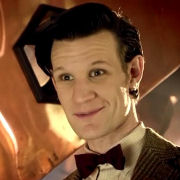 |
|
| Writer: Gareth Roberts |
|
Notes: Roberts worked on this
story from about September 2008 to July 2009, at which point it was
abandoned and The Lodger
developed in its place. The character of Skorm was subsequently adapted
by executive producer Steven Moffat and became Commander Strax,
introduced in A Good Man Goes To
War.
|
| Characters: The Eleventh
Doctor, Amy Pond |
| Episodes: 1 |
| Planned For: Season
Thirty-One |
| Stage Reached:
Full script |
| Synopsis: Involved a Sontaran named
Skorm.
|
|
| References: Doctor
Who Magazine Special Edition #27, DWM Special Edition
#30 |
| Destination: Holocaust |
|
 |
|
| Writer: David Roden |
|
Notes: When former producer John
Nathan-Turner agreed to create a short 3-D Doctor Who sketch for
the BBC's 1993 Children In Need charity appeal -- which would
double as a celebration of Doctor Who's thirtieth anniversary --
he contacted David Roden to help develop a storyline.
“Destination: Holocaust” was Roden's first attempt, but it
was quickly dismissed on the grounds of cost. Nathan-Turner and Roden
would instead write Dimensions In
Time.
|
| Characters: The Seventh
Doctor, Brigadier Lethbridge-Stewart |
| Episodes: 1 (5
minutes) |
| Planned For: 1993
Special |
| Stage Reached:
Storyline |
| Synopsis: In the English countryside, the
Brigadier collects the Doctor for a UNIT reunion. However, the Cybermen
have been tracking the Doctor and their ship crashes nearby. The
Doctor and the Brigadier take refuge in a church as the Cybermen advance
towards them.
|
|
| References: Doctor
Who Magazine #324 |
| The Divided |
|
 |
|
| Writer: Moris Farhi |
|
Notes: Producer Graham Williams
commissioned this storyline from Farhi on November 8th, 1977.
|
| Characters: The Fourth
Doctor |
| Episodes: 4 |
| Planned For: Probably Season
Sixteen |
| Stage Reached: Presumably
storyline |
| Synopsis: Unknown
|
|
| References: Farewell
Great Macedon |
| Doctor Who (1995) |
|
 |
|
| Writer: John Leekley |
|
Notes: Leekley submitted his first
storyline for Philip David Segal's Doctor Who telefilm on July
25th, 1994, drawing heavily on the series bible they had co-created and
Terry Nation's 1975 serial Genesis Of
The Daleks. By July 27th, the Cybs were eliminated and the
Master had acquired a henchman in the form of Castellan Kelner (named
after the character in 1978's The
Invasion Of Time); “Castellan” subsequently became
the character's name instead of his title. Later, the return to
Gallifrey was eliminated by having Borusa direct the TARDIS to Skaro.
The first (partial) draft of Leekley's script was delivered on August
24th. However Segal's boss, Steven Spielberg, felt that Leekley's script
wasn't humorous enough, and that it veered too closely to his own
Indiana Jones franchise. On September 26th, Segal was asked to
replace Leekley. Within days, Robert DeLaurentis became the telefilm's
writer; he would heavily revise Leekley's ideas as a new script entitled
“Doctor Who?”.
|
| Characters: A reimagined
version of the First Doctor |
| Episodes: 1 (90
minutes) |
| Planned For: 1995
telefilm |
| Stage Reached: Full
script |
| Synopsis: In the midst of a Dalek attack
on Gallifrey, Cardinal Borusa dies -- allowing his grandson, the Master,
to become President of the Time Lords. The Master's half-human
half-brother, the Doctor, flees in his TARDIS, which now houses Borusa's
spirit. Searching for his long-lost father Ulysses, the Doctor travels
to London during the Second World War, where he meets American WAC
Lizzie Travis. Together, the Doctor and Lizzie travel back to Ancient
Egypt to find Ulysses, only to be attacked by cybernetic marauders
called the Cybs. Ulysses is revealed to be the dead Pharoah Cheops, but
he regenerates and draws the Cybs away. The TARDIS is summoned back to
Gallifrey, where a suspiciously friendly Master sends the Doctor and
Lizzie to Skaro to prevent Davros' creation of the Daleks. In the
process, the Master takes control of the Dalek army and Davros is
killed, but the Doctor destroys the Dalek incubators. The Doctor escapes
and returns Lizzie to Earth, then heads off to continue his search for
Ulysses.
|
|
| References: Doctor
Who: Regeneration, Doctor Who: The Nth Doctor, Doctor Who
Magazine Special Edition #5 |
| Doctor Who? |
|
 |
|
| Writer: Robert DeLaurentis |
|
Notes: Around the start of
October 1994, DeLaurentis replaced John Leekley as the scriptwriter for
Philip David Segal's Doctor Who telefilm, which was being made
for broadcast by the FOX network in the United States. DeLaurentis
overhauled Leekley's storyline, with the goal of making it more focussed
and fun. He eliminated the notion of Borusa's spirit inhabiting the
TARDIS, and the Doctor's father was no longer called Ulysses (with the
alias “Doctor John Smith” later applied to the character).
DeLaurentis submitted some initial notes on October 5th, a fuller
outline on the 7th, and finally a partial script on the 28th. By the
time his first full draft was completed on December 17th, Lizzie was
renamed Jane McDonald, Winston never left World War II London, the
Doctor's father had a family in 1990s America, and the Daleks were
shape-shifting humanoids. This last element, in particular, was of
concern to the BBC. As such, in DeLaurentis' draft of February 3rd,
1995, the Daleks were renamed the Zenons. Additionally, Borusa was
renamed Pandak, and Sherman was replaced by a horned alien called Gog,
who was not killed and was instead reunited with the Doctor in the late
stages of the adventure. However, Segal had long been uneasy with the
direction of DeLaurentis' work, and this discontent was now shared by
FOX, who advocated a return to Leekley's last draft. Shortly after
turning in his February 3rd script, DeLaurentis left the Doctor
Who telefilm. He was replaced by Matthew Jacobs, who would write Doctor Who (1996).
|
| Characters: A reimagined
version of the First Doctor |
| Episodes: 1 (90
minutes) |
| Planned For: 1995
telefilm |
| Stage Reached: Full
script |
| Synopsis: The Doctor and his research
assistant, Sherman, are exploring an asteroid when they are teleported
to Skaro and discover that the Doctor's half-brother, the Master, has
allied himself with the Daleks. Sherman is killed but the Doctor
escapes back to Gallifrey, where he learns that his grandfather,
Cardinal Borusa, has been killed and the Master has seized power. The
Doctor flees Gallifrey in his TARDIS and travels to London during the
Second World War in search of his long-lost father. There he meets
American WAC Lizzie Travis and her bulldog Winston. Lizzie helps the
Doctor discover that his father has regenerated and was captured while
leading an American unit which was trying to assassinate Adolf Hitler.
The Doctor and Lizzie travel to the United States in the 1990s. There
they apparently find his father, who agrees to accompany them back to
Gallifrey. However, this is really the Master masquerading as their
father, whom he has captured. The Doctor escapes and sabotages the
Master's time-travelling warship, but his half-brother gets away. The
Doctor returns Lizzie to Earth before he and Winston set off in pursuit
of the Master.
|
|
| References: Doctor
Who: Regeneration, Doctor Who: The Nth Doctor, Doctor Who
Magazine Special Edition #5 |
| The Dogs Of Darkness |
|
 |
|
 |
|
| Writer: Jack Gardner |
|
Notes: Script editor Christopher H
Bidmead commissioned this storyline from Gardner on March 29th, 1980.
Subsequently, Gardner was asked to expand “The Dogs Of
Darkness” into full scripts, but to replace the Fourth Doctor with
the Fifth Doctor, as it was now being viewed as a possible adventure for
Season Nineteen. The story was still under consideration by the end of
April 1981, but was abandoned sometime thereafter.
|
| Characters: The Fourth
Doctor (original submission; the revised version featured the Fifth
Doctor, presumably with Adric, Nyssa and Tegan) |
| Episodes: 4 |
| Planned For: Seasons Eighteen
and Nineteen |
| Stage Reached:
Script |
| Synopsis: Unknown
|
|
| References: Doctor
Who Magazine Special Edition #9 |
| Don't Shoot, I'm The Doctor |
|
 |
|
| Writer: John Leekley |
|
Notes: Once Leekley had finished
preparing the series bible for Philip David Segal's version of Doctor
Who, he began to flesh out some of the story ideas proposed therein.
“Don't Shoot, I'm The Doctor” was the only one to undergo
substantial development, likely because Leekley was a fan of the Wild
West period of American history. His storyline was based on Donald
Cotton's 1966 serial The
Gunfighters, but hewed much more closely to authentic history.
Leekley also incorporated a separate legend of the West: that of station
agent Lester Moore, owner of the most famous epitaph in the Boothill
Graveyard at Tombstone (which Leekley would have revealed was coined by
the Doctor). Leekley thought that the feud between the Earps and the
Clantons would serve as a parallel for the state of Gallifrey after the
rise to power of the Doctor's half-brother, the Master. He suggested the
movies Silverado and Back To The Future Part III as the
episode's visual inspirations. Leekley's first storyline was delivered
on May 10th, 1994, but all of his work was eventually abandoned when
Matthew Jacobs was hired to start from scratch and write Doctor Who (1996).
|
| Characters: A reimagined
version of the First Doctor |
| Episodes: 1 (45
minutes) |
| Planned For: 1995
series |
| Stage Reached:
Storyline |
| Synopsis: The Doctor has a toothache and
finds himself in Tombstone, Arizona in 1881. His search for a dentist
leads him to Doc Holliday and his wife, Kate Elder, towards whom
Holliday is physically abusive. The Doctor and Kate begin to fall for
each other, and Kate implores the Doctor to intervene in a growing feud
which pits Holliday and the Earp brothers against the Clanton gang. At
night, Ike Clanton attacks the sleeping Doctor, mistaking him for
Holliday. In the chaos, Ike escapes while Virgil Earp arrests the Doctor
and Holliday. Holliday is freed when the Clantons ride into town, and
the Doctor decides to intervene when another prisoner, Les Moore, is
shot in cold blood. During the shootout at the OK Corral, the Doctor
prevents Holliday from killing a helpless Ike Clanton. The Doctor and
Holliday brawl; Holliday is knocked unconscious, while the Doctor's
bothersome tooth is dislodged in the melee. The Doctor and Kate ride out
of Tombstone. She leaves him at the TARDIS, and he reassures her that
everything will be all right from now on.
|
|
| References: Doctor
Who: Regeneration |
| The Doomsday Contract |
|
 |
| aka Shylock |
|
| Writers: John Lloyd and Allan
Prior |
|
Notes: Lloyd was a frequent
collaborator with script editor Douglas Adams, who commissioned him to
write “The Doomsday Contract” for Season Seventeen around
late October 1978. Lloyd used ideas from an unfinished science-fiction
novel called GiGax, and hewed to the comedic style Adams had
established in The Hitchhiker's Guide To The Galaxy. After Lloyd
submitted an extensive storyline for “The Doomsday
Contract”, he was asked to rein in complex effects sequences and
delete the Spondilas Chamber on the grounds that it was irrelevant to
the plot. He also had to replace the Children of Pyxis, due to fears
that child labour laws would make production difficult. Instead, he came
up with a race of desert-nomads-cum-mercenaries called the Wadifalayeen,
although producer Graham Williams was worried that these new monsters
would offend Muslims. Lloyd also recast the Plenum Trust as an
altruistic conservation organisation, while the chairman of Cosmegalon
was renamed Skorpios. On January 16th, 1979, however, Lloyd had to
abandon “The Doomsday Contract” due to his new commitments
as producer of Not The Nine O'Clock News. Still keen on the
story, Adams obtained Lloyd's permission for the storyline to be
developed into full scripts by another writer. On February 7th he
secured the services of Allan Prior, a playwright who had recently
written for Blake's 7. Although Prior submitted his scripts on
March 2nd, these were rejected. On August 15th, with his attention now
turning to Season Eighteen, Adams again sought authorisation for another
writer to be brought onto the project, which was now referred to as
“Shylock”; the same permission was granted yet again on
September 26th, by which time the title had reverted to “The
Doomsday Contract”. However, no further development seems to have
been undertaken, and with Adams' departure from Doctor Who at the
end of November, it appears that “The Doomsday Contract” was
dropped altogether. In March 2021, an audio adaptation by Nev Fountain
was released as part of the Doctor Who: The Lost Stories range
from Big Finish Productions.
|
| Characters: The Fourth Doctor,
Romana, K·9 |
| Episodes: 4 |
| Planned For: Seasons
Seventeen and Eighteen |
| Stage Reached: Complete
script |
| Synopsis: While vacationing on Cimmerian
II, the Doctor is summoned before the Altribunal of Coelare Coelum, an
intergalactic court. He has been called as a witness in a millennia-old
case in which the Plenum Trust Corporation (whose Executive Vice
President, Smilax, is an old friend) is opposing the purchase of the
Earth by Cosmegalon and its unscrupulous owner, Jugend Bruisa. Plenum
had been testing the Spondilas Chamber -- an incredibly powerful device
capable of polymorphing matter -- when Cosmegalon bought the Earth via
dubious means. Now Smilax fears the Chamber falling into Bruisa's
hands. In court, the Doctor gives evidence that the Earth is home to
intelligent life, which by law would nullify Cosmegalon's ownership. He
is sent to Earth to retrieve a human as proof. Arriving in mediaeval
Yorkshire, the Doctor is prevented from completing his task by the
monstrous Children of Pyxis, who have been despatched by Cosmegalon.
Fortunately, he is saved from death by the timely intervention of
Smilax, and manages to spirit away the Spondilas Chamber. Nonetheless,
with the Doctor having seemingly failed, the court rules in Cosmegalon's
favour. However, the Doctor tricks Bruisa and the Children of Pyxis into
travelling to modern-day Earth near a missile base, where their ship is
annihilated. |
|
| References: Doctor
Who Magazine #218-219, DWM Special Edition #9 |
| Doomwraiths |
|
 |
|
| Writer: Philip Martin |
|
Notes: Martin submitted this idea
on December 28th, 1983, while awaiting feedback on Season Twenty-Two's
Vengeance On Varos. It was inspired
by the theories of astronomer and author Sir Fred Hoyle, who posited
that the origins of life on Earth lay in outer space. On March 9th,
1984, script editor Eric Saward noted that more development would be
needed before he could properly assess “Doomwraiths”; the
notion was not pursued further.
|
| Characters: The Sixth Doctor,
Peri |
| Episodes: Unknown |
| Planned For: Season
Twenty-Three |
| Stage Reached: Story
idea |
| Synopsis: Millennia ago, the Doomwraiths
seeded the Earth with their own genetic code in order to save their
dying species. Now the Doomwraiths have reemerged to discover that life
on Earth did not evolve to their design. The Doctor and Peri must stop
the Doomwraiths from recovering their genetic code and destroying the
human race.
|
|
| References: Doctor
Who Magazine #309 |
| The Dream-Spinner |
|
 |
|
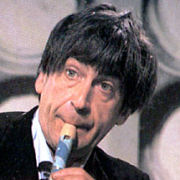 |
|
| Writer: Paul Wheeler |
|
Notes: Wheeler originally submitted
“The Dream-Spinner” to the Doctor Who production
office in early 1966. Although story editor Gerry Davis was impressed
with its ideas, he felt that it was not the kind of adventure that the
production team was looking for, and it was rejected on June 8th.
Wheeler subsequently resubmitted “The Dream-Spinner”, and he
was commissioned to write a four-part story breakdown on February 23rd,
1968. The story had been expanded to six episodes by the time the first
installment was requested on March 13th. “The Dream-Spinner”
was intended to bear the production code Serial WW, making it the second
story into production during the sixth recording block (and therefore
the fourth story of Season Six). However, Wheeler's script for Episode
One was not to the satisfaction of the production office, and it was
abandoned on April 9th. The
Invasion was extended to eight episodes as a result.
|
| Characters: The First Doctor
(original submission); the Second Doctor (resubmission) |
| Episodes: 6 (initially
4) |
| Planned For: Season Four
(original submission); fourth story of Season Six
(resubmission) |
| Stage Reached: Script for
episode one |
| Synopsis: Involved a person with the
power to make others believe that their dreams are real.
|
|
| References: Doctor
Who Magazine Special Edition #4, The Doctors: 30 Years Of Time
Travel, The Doctor Who Production Diary: The Hartnell
Years |
|